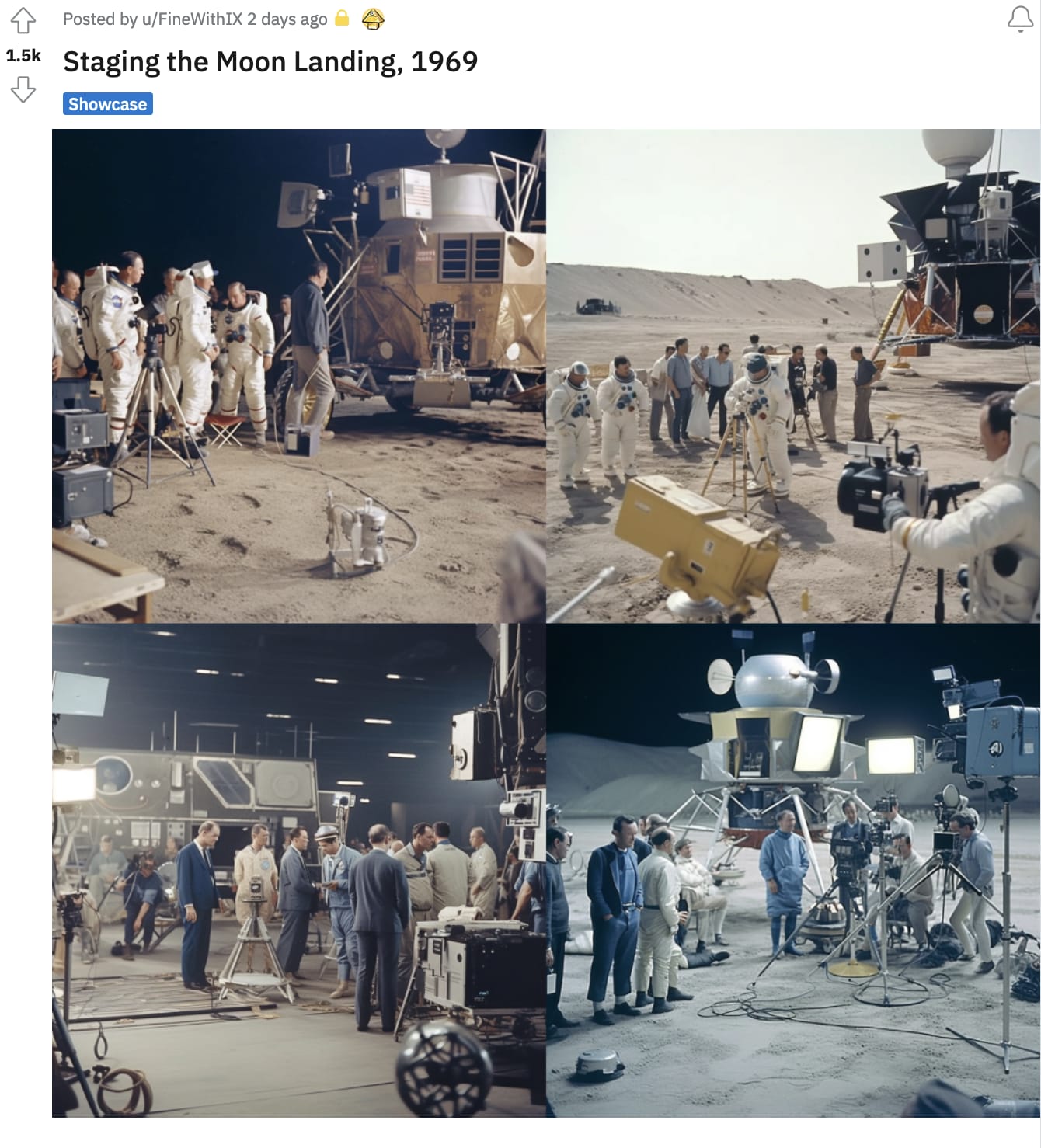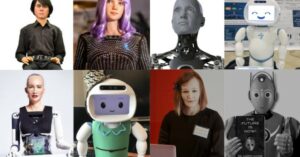By now, you’ll have seen it. Pope Francis walks across the frame, his focus on the mid-distance. He’s brightly lit as though it’s early morning. A silver cross hangs from his neck, dangling over his snow-white, Balenciaga-inspired puffer jacket. It’s the baller bishop, the steezy father, his holy drippiness — and he’s been ordained from on high.
If you were on social media at any point over the past weekend, you would have seen the image. And — if you were anything like me and seemingly millions of other people — you didn’t immediately realise it was AI-generated.
In history books, this will likely go down as the first time the public was fooled en-masse by an AI-generated image. But this is just the beginning, a marker of times to come.
The AI pope’s rise to prominence
The picture first reached the public in any real sense on Twitter, with this tweet in particular being widely shared:
OKAAYYY pic.twitter.com/MliHsksX7L
— leon (@skyferrori) March 25, 2023
The image itself was created by a Reddit user (interviewed by Buzzfeed here) and posted to the Midjourney subreddit on Friday, along with three other images the AI-driven picture generator created from the prompt.
Then it went haywire in that peculiarly online way; memes flowing, people sharing the image with comments like, “the pope slings pipe with a real fuccboi energy” — and, of course, individuals using Photoshop to the fullest extent of its mighty powers:
Are you wearing the…
“papal puffer parka? yes. I am.” pic.twitter.com/59corwNlCe
— Nick (@nicktotin) March 25, 2023
It was only further through the weekend that many people who’d seen or shared the fake picture of the pope realised it was AI-generated. In some senses, it’s not hard to spot a computer is behind the image.

The thing is, while you’re scrolling through thousands of images and videos on social media, these small details are easily missed. Let’s put it this way: if we had to sit and analyse every single image that came across our feeds, we’d never get anything done.
A mass hallucination
We’ve been getting closer and closer to an inflection point recently, much of it driven by the launch of Midjourney version five. In fact, we were close to the public believing an AI-generated image is real with pictures of Trump being arrested. Thankfully, the fact they looked clearly fake — as well as the lack of corresponding news stories about the incident — meant that the majority of people weren’t fooled at first glance.
But the AI pope changed all that.
This moment has been a long time coming — and it’s no surprise it was a celebrity or public figure that made us reach this inflection point. As journalist Ryan Broderick pointed out on Twitter, one possible explanation for this image in particular spreading like wildfire is “the pope aesthetically exists in the same uncanny valley as most AI art.” This makes bizarreness an inherent part of his public character, meaning these AI-generated images can pass our bullshit detectors easier.
I think it goes even further than that. Just consider the increasing surreality of the past several years. Picture the photo of Trump in the White House, beaming in front of piles of fast food with a sombre portrait of Abraham Lincoln behind him. Or the one of the capital riots’ shaman, a man wearing a horned hat with his face painted, cavorting around the heart of American politics.
Trump, who can’t even spell hamburger, invited the Clemson Tigers to the White House and served them Wendy’s, McDonalds, and Burger King. 🍔
Now, the Trump administration is trying to blame Democrats for their poor decision: https://t.co/3cV1XcbcHd pic.twitter.com/3tYQaIOeXu
— Complex (@Complex) January 15, 2019
In retrospect, what feels more likely? The pope wearing a stylish jacket or the President of the United States serving McDonald’s in a historic reception room? It’s hard to tell, because society itself has become increasingly uncertain, truth and normality more and more abstract.
Inching into hyperreality
The pictures of the pope with immaculate drip are broadly harmless, the worst outcome being that some people think the Catholic church and the man who once signed a Lamborghini are materialistic or money-obsessed. But if we applied the same mass belief of a fake image to something like politics, things can go downhill quickly.
AI-generated images would be bad enough in times of relative political dignity, but we’re currently living through what some refer to as a post-truth era, where many politicians and news stations simply, well, lie.
Not only is public trust in governments at historic lows, but this is made worse by an ageing population in the western world. Many older people struggle to use their phones, let alone can separate AI-generated images from truthful ones.
We are, for all intents and purposes, going further into hyperreality, a concept termed by Jean Baudrillard. This is a concept where the real and artificial merge, becoming indistinguishable from one another. It’s impacting everything, from fashion to the aesthetic of AI images themselves.
Let’s put it in more concrete terms. Midjourney v5 and online communities are already pumping out images that poke at the edges of reality, creating scenarios that didn’t exist. The historic quality of those photos further undermines our own ability to separate fact from fiction.
Something wild is happening on the Midjourney subreddit.
People are telling stories and sharing photos of historic events – like the “Great Cascadia” earthquake that devastated Oregon in 2001.
The kicker? It never happened. The images are AI-generated. pic.twitter.com/2ziHJYsTDK
— Justine Moore (@venturetwins) March 26, 2023
And it doesn’t take a huge analytical mind to consider what realistic images of, say, the moon landing being staged could have on the populace at large.

The influence of hyperreality doesn’t just mean things being created, its influence can go the other way too.
Think of the pictures of Boris Johnson standing in front of a bus declaring incorrectly that the UK will have an extra £350 million to fund the NHS after leaving the EU. Considering the bleak state of modern Britain, the food shortages and sky-high inflation, it feels unreal, almost AI-generated.
And what’s stopping politicians from claiming that’s exactly what it is? Surely no one could’ve been that wrong? It must be AI. A fake. A generated image peddled by those who can’t accept the unfettered glory of a finally free United Kingdom?

Thinking small to act big
Here, we come to the crux: what can be done to fight this insidious march of AI-generated images into an unprepared society? The worrying part is no one really knows.
Two years ago it would’ve been impossible to predict that an AI-generated picture of the pope would shake society, or that doctored audio of Biden and Trump amusingly talking about games would rip through the internet.
Yes, the EU and UK have been active in trying to create AI legislation, but even the best rules will lag behind the increasing pace of technology. This doesn’t mean that these rules should be abandoned, simply that more needs to be done around them.
Media studies — once derided as a ‘doss’ subject — is now more important than ever. In this era of mainstream misinformation, being able to analyse the passage of information is a vital skill. This must be extended.
In a world of AI generation, we need to teach people how these systems operate, how to check for doctored images, the value of sources, and basic methods of finding the closest approximation to the truth there is. This sort of AI-informed media studies should be rolled out to not only every school across Europe, but offered to those of all ages.
Another route that I believe is vital in this coming age of hyperreality is local action. As humans, we’re designed to operate in small groups. It’s one of the reasons why the news cycle is so anxiety-inducing; we’re simply not built to take in the problems of the whole world.
As AI spreads, it’s going to make getting an accurate picture of the wider world tougher. But what we can understand is what directly surrounds us.
Political divides can swiftly disappear when a hole in the road needs fixing or a school needs to raise funds. In these situations, you deal with living, breathing people that are attached to a community, rather than a faceless online mass. In a world of hyperreality, holding on to the aspects we know are true can help cut through the bullshit.
As the phrase goes: think global, act local. If — alongside AI education and legislation — we look towards solving local issues with an eye on worldwide ones, the rise of this sort of technology can happen without turning society into some sort of mush. Hell, maybe AI generators of all kinds could be used for fun and harmless activities.
But if we allow this technology to drag us into full hyperreality without taking appropriate precautions, then who knows what might happen — but I don’t have high hopes of it being good.
And all this because someone put the pope in a drippy jacket.



